Companion planting is not a new concept, some people say it started in the 1970s with the rise of the organic movement. It’s true, there was a resurgence of using plants in various combinations to assist growing or protecting crops during the ’70s, but the history of companion planting stretches way beyond last century.
The History Of Companion Planting
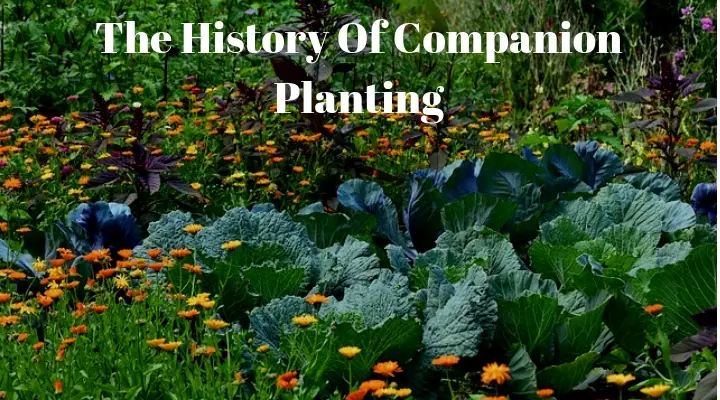
Having looked into the history of companion planting for quite a while now, I can honestly say that companion planting is at least 2000 years old and possibly much older. The ancient Greeks and Romans both practised a form of companion planting, mainly to improve their grape crops for wine making (they had their priorities right).
But approximately 6-8000 years before them the indigenous people of the American continent were aware of the benefits of companion planting. (More on that later).
The Greeks And The Romans And Companion Planting

From the writings of Marcus Terentius Varro in his book on agriculture written in the 2nd century BCE, we know that not only the Romans but also the Greeks were well aware of the effects certain plants have on their neighbours.
The manner in which your neighbour keeps the land on the boundary planted is also of importance to your profits. For instance, if he has an oak grove near the boundary, you cannot well plant olives along such a forest; for it is so hostile in its nature that your trees will not only be less productive, but will actually bend so far away as to lean inward toward the ground, as the vine is wont to do when planted near the cabbage. As the oak, so large numbers of large walnut trees close by render the border of the farm sterile.
The Romans had observed that growing cabbages near grape vines was detrimental to the grape vine. Also that walnut trees stopped other plants from growing. This is due to allelopathy, the way certain plants secrete substances into the soil either to improve and stimulate plant growth or to inhibit it. Allowing themselves to thrive.
As the Roman empire grew, they brought these practises to every country they occupied, Britain included. Then just after the Romans left Britain we have what are known as the dark ages. They were called the dark ages because nothing or very little is known about them.
Divine Intervention
From the end of the 5th century monks started to arrive in Britain from continental Europe. They mainly grew herbs and vegetables for use in the monastery. They would have brought their companion planting skills with them but would have kept this knowledge to themselves.
Then between 1536 and 1541 Henry the 8th, after a disagreement with the catholic pope, dissolved the monasteries thus losing their companion planting know how.
The Chinese And Companion Planting

Chinese farmers started using mosquito ferns as a companion plant to rice crops at least 1000 years ago. Not only do mosquito ferns fix nitrogen from the air in the same way that beans do, but they also block sunlight from other plants that would compete with and probably overwhelm the rice.
Indigenous Americans And Companion Planting
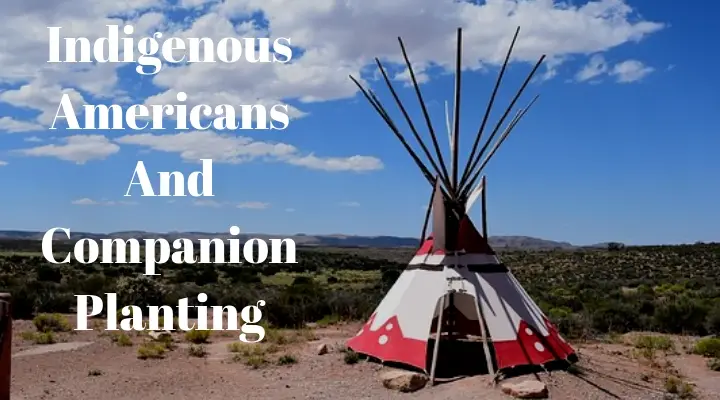
The native people of the Americas were using a form of companion planting between 8-10,000 years ago. They were growing squash, beans, and corn in what has commonly been called the 3 sisters. So at least 8000 years ago there was a form of companion planting being practised.
Britain And Companion Planting
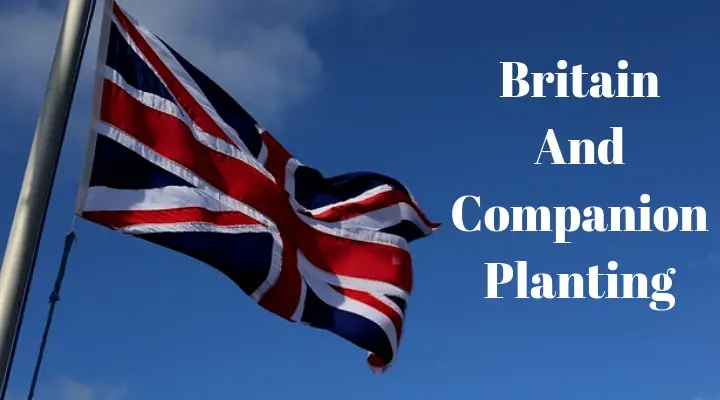
Jump forward to the late 17th and early 18th centuries and in Britain the “father of British agriculture” Jethro Tull was busy studying the effects of weeds in competition with broadcast sown crops. He developed his seed drill after watching French and Italian growers hand sowing seed in rows, and after realising this was too time consuming, he came up with the seed drill to speed things up.
Then “Turnip” Townsend developed the system of 4 crop rotation to prevent the build up of pests or diseases in the soil and increase soil nutrients. Which in turn increase soil fertility and crop yield.
The Problem With New Innovations
All wonderful stuff but unfortunately as a result of these innovations, the practise of companion planting was some how forgotten about in Britain. Not so on the near continent though.In France the market gardeners were well aware of combining crops to save space, improve plant health and yield through companion planting.
Companion Planting And Potager Gardens
Potager gardens or kitchen gardens were developed in France on small scale plots to get the most produce from a small area. Whether by accident or design these potagers were of course (and still are) companion planting. As such I had to include them in the history of companion planting.
Charles Darwin On Companion Planting
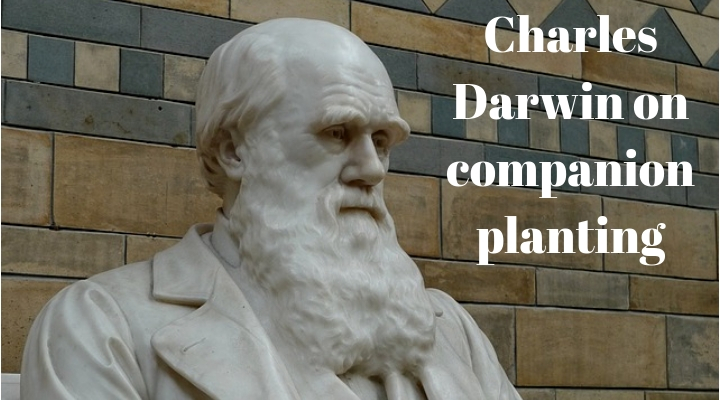
It has been reported that Darwin noticed that a particular village produced more hay than neighbouring villages. He put forward the theory that as this village had more old ladies as well it all made sense. Old ladies keep cats, cats catch mice, mice are the main predators of wild bees.
Wild bees are the main pollinators of red clover and red clover improves the yield of hay. So in this food chain we see that by increasing the wild bee population we increase the yield of hay. This is due to the effects of red clover on the hay ergo companion planting.
Companion Planting And The Organic Gardening Movement
During the first half of the 20th century, the Organic movement started to form mainly as opposition to the large scale agricultural developments that relied solely on chemicals as herbicides, pesticides and fertilizers. During this organic revival companion planting was rediscovered and we started to experiment with new (old) techniques.
Square Foot Gardening Companion Planting
In the 1980s Mel Bartholomew came up with the square foot gardening system. This system uses much less land to grow a considerable amount of produce. It is companion planting by default, you cannot grow by this system and not companion plant.
Permaculture And Companion Planting
The system of permaculture has it’s roots (pardon the pun) in the way nature grows. In woodland there are tall trees, smaller trees, bushes, herbaceous plants, ground cover, root crops and vines. All growing together in a type of symbiosis.
These are the basis of the 7 layers in permaculture.
Started in the late ’60s permaculture has become the wonder system of growing crops in extreme conditions. Greening the desert is an excellent video to show exactly how these principles can be used.
Geoff Lawton in Jordan demonstrating permaculture in action.
Why Some Experts Don’t Condone Companion Planting
What Geoff Lawson and other “permaculturists” are doing is companion planting and successfully helping to grow more produce.
The trouble with science is everything has to be tested and proved before it can be accepted. When dealing with nature there are too many variables, making 100% proof not always possible. However in nature certain plants grow together and others are never seen close to each other.
Is this coincidence? Logic dictates that it is not. The Indigenous Americans, the Greeks, the Romans, they all could see that plants affect their environment. And by so doing affect neighbouring plants.
Companion Planting Versus Large Scale Monocrop Farming
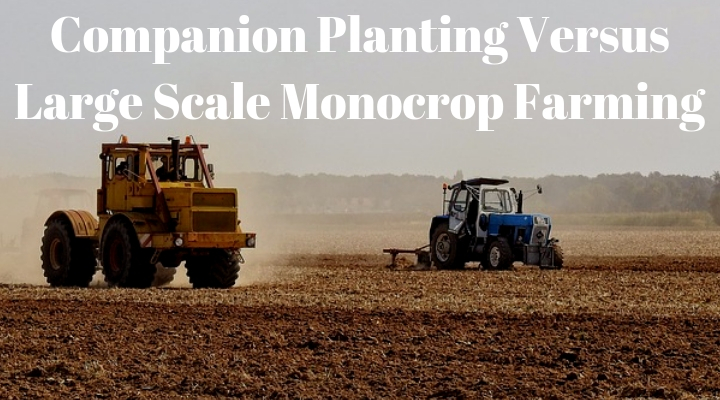
I only have to mention the “Dust Bowl” and it becomes obvious why large monocrop farming is not good for the ecology of the planet. The farmers in the mid west of the USA and Canada, started large scale farming. They removed the native grassland to allow much larger farming machinery onto the land to grow larger crops.
Unfortunately the results of this were a disaster. During a severe drought, high winds swept across the plains removing the top soil leaving the farmers with no soil to grow crops on.
The drought and erosion of the Dust Bowl affected 100,000,000 acres (400,000 km2) that centered on the panhandles of Texas and Oklahoma and touched adjacent sections of New Mexico, Colorado, and Kansas.
Companion Planting Helping To Stop Soil Erosion
I’m not saying that companion planting would’ve stopped this phenomenon but the more plants holding the soil in place the less chance of this sort of thing occurring. The results of companion planting would definitely increase the fertility of the soil and enhance the crops grown.
The Shortened History Of Companion Planting
So there you have it, the history of companion planting. In a nutshell: About 10,000 years ago the peoples of America were growing the 3 sisters. In Europe 2200 years ago the Romans were aware of companion planting if only to produce better wine.
The Romans learned it from the Greeks and then spread their knowledge throughout the “civilised World”. 1000 years ago the Chinese were companion planting to improve their rice crops.
In the 1700s the French Potager and market gardens were companion planting to get the most from small plots. By the 1900s Charles Darwin noticed how red clover aided the hay production.
Then In the early 20th century we once again became aware of the ancient practise of companion planting.

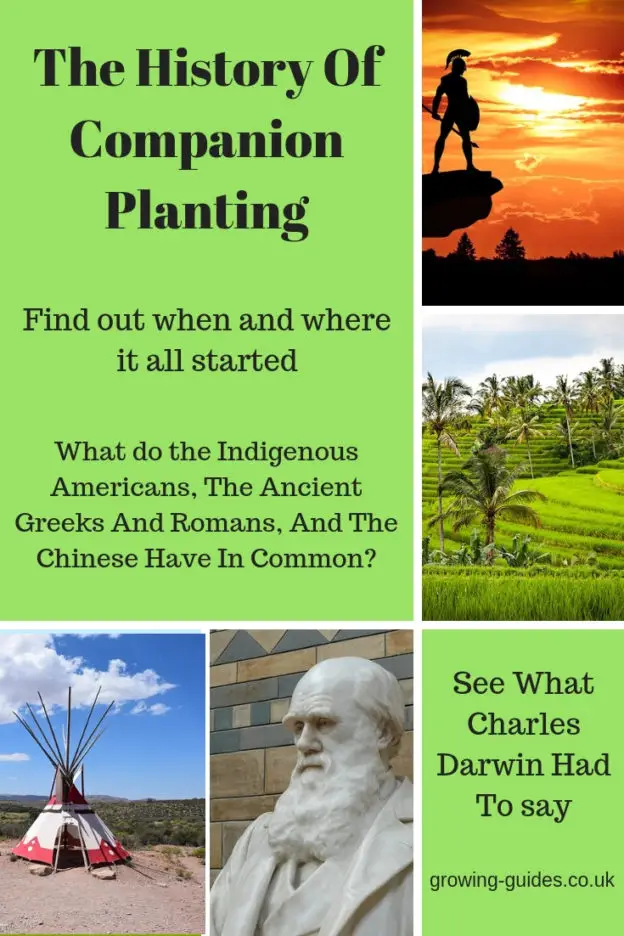
wonderful work as usual: very well researched and sound conclusions. i concur with all your insights and have nothing but high praise for this excellent article. i’m guessing it was painstaking but at the same time enjoyable to put this together so i hope you didn’t tax yourself too much in the process.
p.s. love the inclusion of el supremo geoff lawton who with meister sepp holzer stand as the preeminent lords of permaculture today.
Thank you for your kind words as always Pusang, I did a lot of research for this post, it’s been on the back boiler for a while ever since I saw an “expert” write off companion planting as new age mumbo jumbo. As you know I have had excellent results using companion planting so it was only a matter of time ’til the history of companion planting was posted. 🙂
Pingback: Zucchini Companion Plants - Together Time Family